08-09-Daily AI News Daily
AI News Daily 2025/8/9
AI News|Daily Read|Aggregated Web Data|Cutting-Edge Science Exploration|Industry Free Voice|Open Source Innovation Power|AI and Human Future| Visit Web Version ↗️
Today’s Summary
Microsoft fully integrates GPT-5 into its core ecosystem, with the new model auto-switching based on task complexity.
AI coding tool Cursor offers paid users a limited-time free trial of GPT-5 and launches a new CLI tool.
New research reveals an "attention basin" flaw in large language models that ignores intermediate information and proposes optimization methods.
In industry news, Grok 4 suffers a shocking defeat in a chess match, while the general-purpose robot Aibao wows the crowd.
Top model evaluations show varying capabilities, but users still need to stay vigilant about AI hallucinations.Product and Feature Updates
GPT-5: The release of GPT-5 has sent massive waves, and Microsoft, quick as a flash, announced its full integration into Copilot, Azure, and GitHub, among other core ecosystems. This new model introduces an innovative smart mode that automatically switches its “brain” based on task complexity – talk about an efficiency game-changer! This deep tie-up signals that Microsoft and OpenAI’s partnership - (AI News) is redefining the boundaries of AI application, truly kicking off a new era of intelligent revolution. ✨
Cursor: AI coding tool Cursor has just dropped a sweet gift for developers: paid users can now snag a limited-time free trial of GPT-5’s powerful coding chops. At the same time, Cursor also thoughtfully rolled out a brand-new CLI tool, letting command-line enthusiasts enjoy AI-powered awesomeness without ever leaving their terminal. This move is undoubtedly a clever play by Cursor to beef up its market position (AI News) amidst fierce competition. 🎁
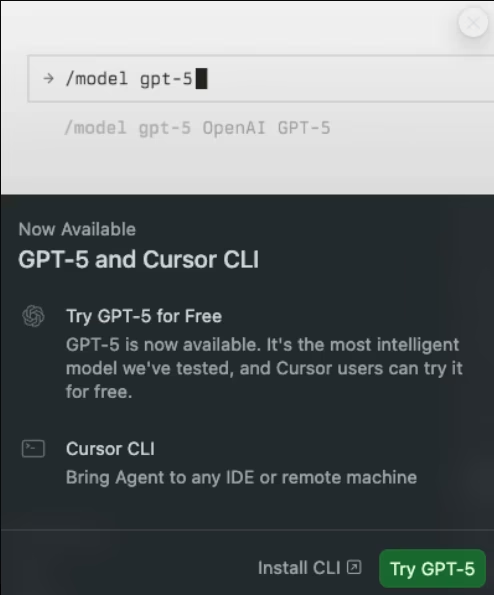
Google: Google’s got plans to roll out a “Camera Coach” feature in its Pixel 10 series, letting AI dish out composition and lighting advice before you even snap the pic—like having a photography guru living right in your phone. But this pre-shot guidance technology - (AI News) has sparked some serious chatter about privacy and creative homogenization. Sure, it could turn newbies into pros instantly, but will our future social feeds just be crammed with generic “AI-templated” photos? Food for thought, right? 📸
Cutting-Edge Research
New Research: A new study has spilled the beans on a curious “flaw” in large language models: they’re like students who only check the intro and conclusion, systematically ignoring the juicy bits in the middle—a phenomenon vividly dubbed “Attention Basin.” Building on this, researchers cooked up a clever re-ranking method - (AI News) called AttnRank, which, without needing to retrain the model, helps it focus on key info. This is basically the textbook example of “getting the horse to run without feeding it oats!” 🤯
Emergency Response Plans: How do we whip up effective emergency response plans in the face of increasingly frequent cyberattacks? A paper has dropped some fresh insights, leveraging a specially modified, lightweight large language model to assist decision-making, effectively slashing costs and the risk of “model hallucinations.” This method, a three-step dance of fine-tuning, information retrieval, and forward planning, has cooked up emergency response plans (AI News) that not only cut recovery time by 22% but also run smoothly on regular hardware—a real “dependable strategist” in the cybersecurity realm! 🔒
Industry Outlook and Social Impact
Grok 4: In the much-hyped inaugural Large Model International Chess Tournament, pre-tournament favorite Grok 4 shockingly got steamrolled 0-4 by OpenAI’s o3, delivering a massive upset. Grok 4 played like a completely different “machine” in the final, constantly making rookie blunders, transforming from a “cold-blooded killer” into a “chess board zombie”—making the match process (AI News) incredibly dramatic. This showdown wasn’t just a tech tussle; it became the talk of the town, a classic case study in “AI Psychology” classic case - (AI News) . ♟️

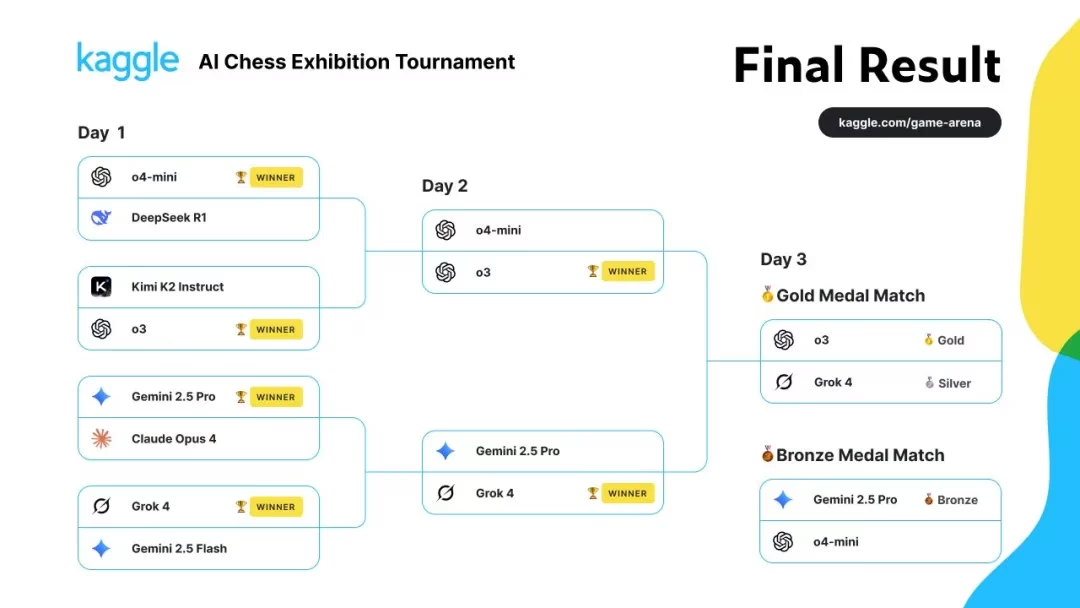
Aibao: The Beijing World Robot Conference was absolutely packed, but the undisputed star of the show was “Aibao,” a general-purpose robot from Zhizu Square. It morphed from a rock drummer to a cold drink shop owner, wowing the audience non-stop. Behind Aibao is the world’s first full-stack, independently developed GOVLA large model, giving it super-duper capabilities in full-domain perception and whole-body coordination. No longer is it just a “specialist” confined to single tasks! Aibao’s applications in multiple real-world scenarios - (AI News) signal that general-purpose robots are moving from sci-fi to reality. 🤖

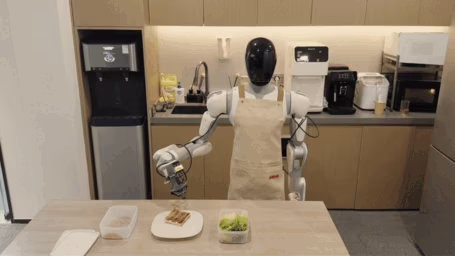
GPT-5: The launch of GPT-5 has officially kicked off the showdown among three top-tier models—a real “clash of the titans.” Comprehensive evaluations show that GPT-5 is like an all-around overachiever, excelling evenly across subjects. Claude 4 Opus, meanwhile, is the programming whiz kid, with coding skills that are simply off the charts. And Gemini 2.5 Pro, thanks to its massive context window, is untouchable when handling long documents. This detailed model comparison report - (AI News) offers a clear “choose-your-champion” guide for users with different needs. 🏆
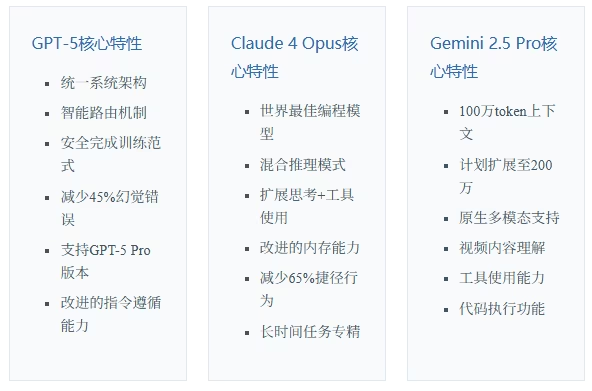
Top Open Source Projects
OpenAI’s Codex: OpenAI’s Codex project, a lightweight yet powerful coding agent, runs right in your terminal and has already snagged ⭐32.6k stars on GitHub (AI News) . It seamlessly integrates AI smarts into your command-line workflow, giving developers coding suggestions and help without ever switching windows. For terminal-loving geeks, this is basically the dream coding buddy. 🧑💻
Polar: Wanna monetize your digital products or SaaS services pronto? Polar is the open-source engine built just for that! It provides a complete solution, letting you set up a sales system in minutes and has already raked in ⭐6.1k stars on GitHub (AI News) . It handles all the nitty-gritty backend stuff, freeing you up to focus on perfecting your product—a real blessing for indie devs and small teams. 💰
Google’s adk-python: Google’s adk-python is a code-first Python toolkit cooked up for building, evaluating, and deploying complex AI agents, winning ⭐11.7k stars on GitHub (AI News) . This project gives developers fine-grained control from start to finish, enabling them to craft truly flexible and reliable AI agents. It signals that we’re moving past simple prompt engineering into a more mature, controllable era of AI agent building. 🛠️
Social Media Shares
OpenAI’s Model Auto Switcher: If you’ve been scratching your head wondering why OpenAI’s model auto-switching feature is acting wonky, don’t doubt your own moves—its “Model Auto Switcher” is genuinely broken! Baoyu relayed internal intel that the feature has issues and is currently getting fixed. This amusing anecdote (AI News) is pretty hilarious; turns out even top-tier AI systems need a good old “reboot.” 😂
GPT-5 & Codex CLI: Baoyu is strongly recommending everyone upgrade and try out the Codex CLI, which is now deeply integrated with GPT-5, claiming its capabilities are totally next-level. Just update and log into your ChatGPT account, and boom, you’ll unlock a super powerful coding assistant right in your terminal. Want to experience cutting-edge AI coding - (AI News) ? Get on it now! 🚀
GPT-5 Frontend Capability Test: A user put GPT-5’s frontend skills to the test and found that while it’s clearly come a long way from its predecessor, it still lags behind Gemini and Claude in some areas. This share (AI News) vividly illustrates that different models have their own strengths—no single king rules them all. Even better, the original tweet’s comments section has turned into a “secret manual” exchange for prompt engineering, absolutely packed with golden nuggets! ✨
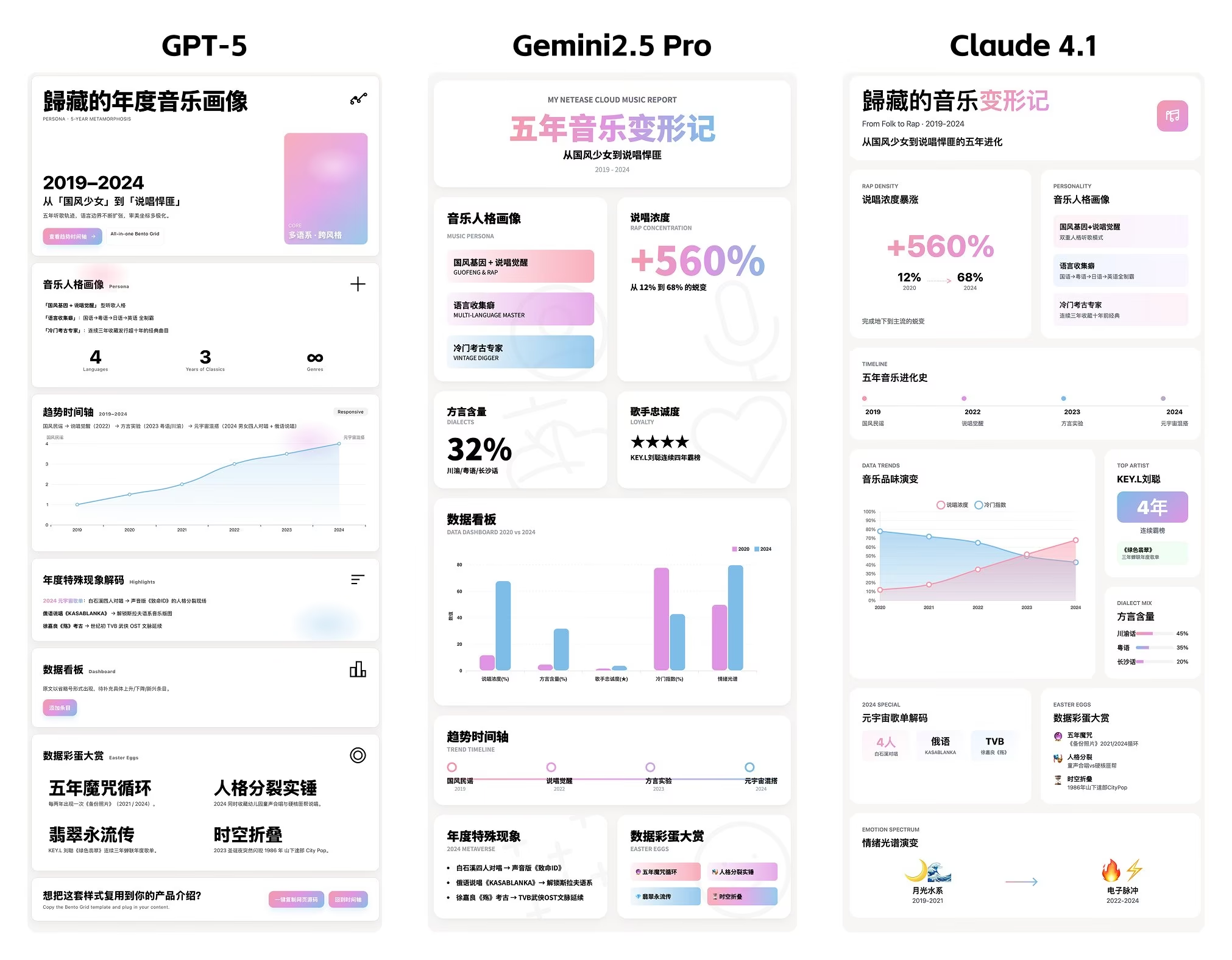
AI’s Preference for Blue-Purple: BigYe Chengpu finally spilled the beans on AI’s peculiar love for blue-purple hues: it’s all because, five years ago, the founder of Tailwind CSS set the default button color to indigo! This tiny little setting, through the “feeding” of massive datasets, ultimately shaped AI’s “aesthetic preference”—a truly beautiful accident - (AI News) ! 💜
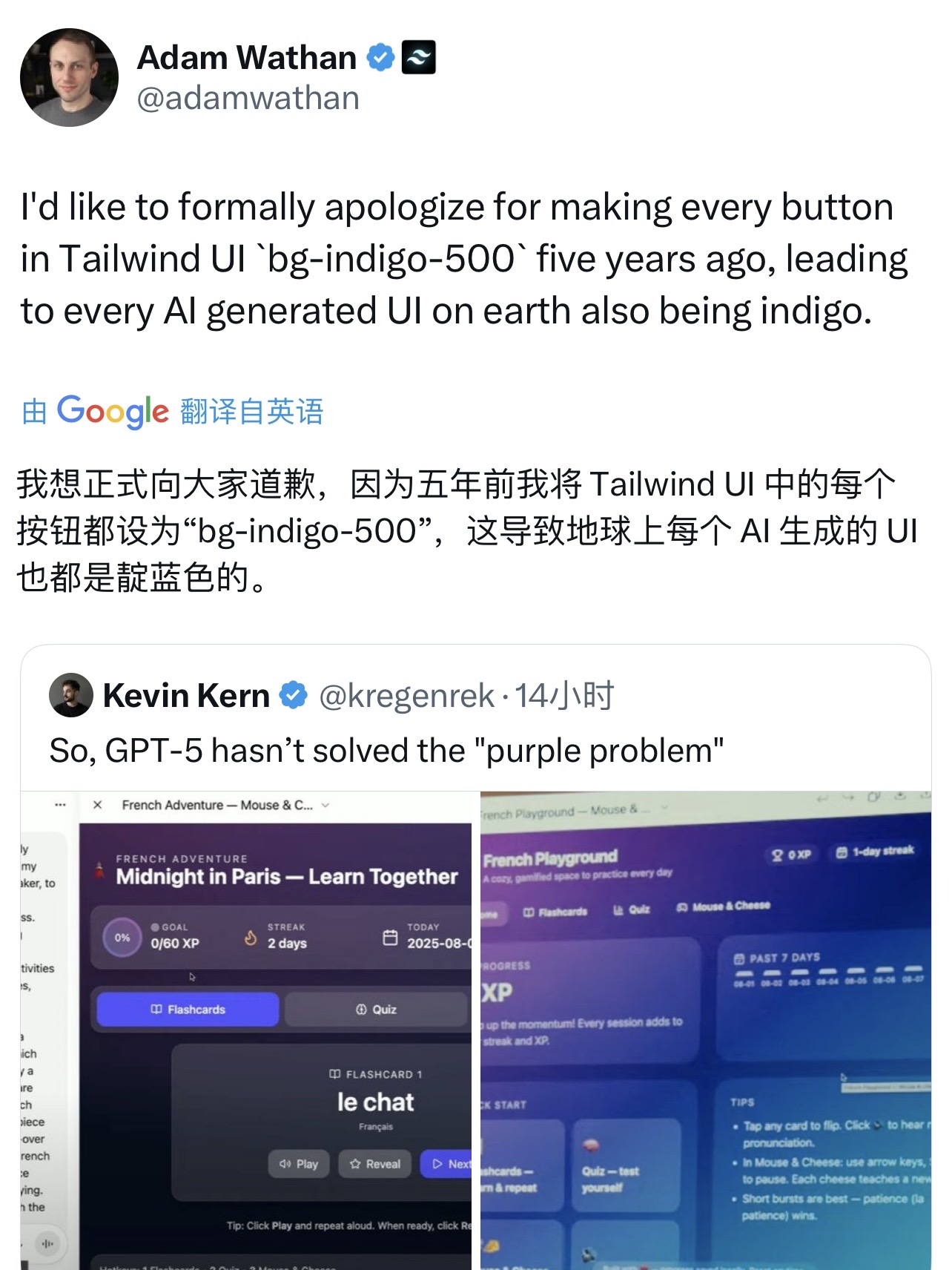
Qwen’s Watermarked Images: Another amusing “makeshift team” anecdote from the AI circles: A netizen discovered that images generated by Alibaba’s Qwen model occasionally carried the watermark of its competitor, “Jimeng.” Yangyi sharply quipped that this indicates even big players might “slack off” on data cleaning—something a simple batch process could fix, yet it accidentally exposed the training data source - (AI News) ! 🤦♀️

AI Logic Test: It’s 2025, and are we still testing top-tier AI with elementary-level logic problems? A user shared a question about “daughter scoring 38 points,” and the results were laugh-out-loud hilarious: only o3 and GPT-5 Thinking got it right, while Gemini and Claude both “crashed and burned.” This interesting test - (AI News) once again proves that a model’s power isn’t always synced with human common sense reasoning. 🤔

GPT-5 Mini (High): A Reddit post pointed out that GPT-5 Mini (High) has quietly leaped past Gemini 2.5 Pro and Claude Opus 4 on the ARC-AGI leaderboard. Not only did it score higher, but its cost was also significantly lower. This news (AI News) perfectly sums up “good things come in small packages.” It proves that in the AI world, smaller, more efficient models can still pack a punch—cost-effectiveness is king! 👑
Model Hallucinations: Yangyi took to social media to warn everyone that as we use AI in more and more scenarios, we absolutely need to stay sharp and beware of being led astray by “model hallucinations.” He cited a severe data organization error by an AI browser as an example, vividly showing how AI can confidently spout nonsense. This practical guide to avoiding pitfalls - (AI News) stresses the necessity of human review, and he conveniently gave a sneak peek of his own stronger tool. 😉

AI Product Self-Recommendation: AIClient2API ↗️
Tired of juggling between different AI models and getting handcuffed by annoying API rate limits? Well, buckle up, because you’ve just found your ultimate solution! 🎉 ‘AIClient-2-API’ isn’t just a regular API proxy; it’s a magic box that can transform tools like Gemini CLI and Kiro client into powerful, OpenAI-compatible APIs.
This project’s core charm lies in its “reverse thinking” and awesome features:
✨ Transform clients into APIs, unlock new possibilities: We’ve ingeniously leveraged Gemini CLI’s OAuth login, letting you easily break through the official free API’s rate and quota limits. Even more exciting, by wrapping Kiro client’s interfaces, we’ve successfully cracked its API, enabling you to seamlessly call the powerful Claude model for free! This offers you a “cost-effective solution for programming using free Claude API plus Claude Code development.”
🔧 System prompts, you’re in command: Want to make AI behave exactly as you wish? We’ve got powerful System Prompt management features. You can easily extract, ‘overwrite,’ or ‘append’ any system prompt in a request, fine-tuning the AI’s behavior on the server side without even touching the client code.
💡 Top-tier experience, budget-friendly cost: Imagine this: using Kilo Code Assistant in your editor, supercharging it with Cursor’s efficient prompts, and pairing it with any top-tier large model—why stick to Cursor when you can have it all? This project lets you combine elements to create a development experience comparable to paid tools, all at a super low cost. Plus, it supports MCP protocol and multi-modal inputs like images and documents, so your creativity knows no bounds.
Say goodbye to tedious configurations and hefty bills, and embrace this new AI development paradigm that’s free, powerful, and flexible all rolled into one! 🚀
AI News Daily Voice Edition
| 🎙️ Xiaoyuzhou | 📹 Douyin |
|---|---|
| Rebirth Pub | Self-Media Account |
 | 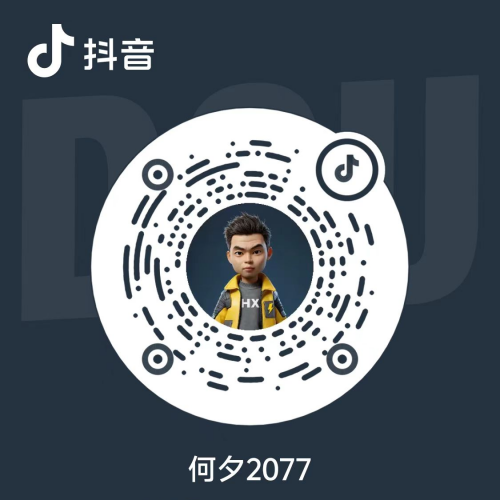 |
AI Sci-Fi Novel - “The Stargazer”
Chapter Seven: Prometheus’s Gift
1. (Ancient Times)
Kli’s “gift” began to appear mysteriously in the tribe’s sight. Sometimes it was an antelope, precisely speared through the throat, left on their foraging path the next morning. Other times, it was a large pile of de-shelled nuts, neatly stacked on a flat rock near the cave. Once, after a sudden downpour, they even found the cave entrance blocked by a simple yet effective shelter made of large leaves and branches, keeping the cave floor dry.
These “Prometheus’s gifts” allowed the tribe to barely survive the harsh dry season. Yet, instead of gratitude, these gifts bred deeper fear and superstition. The tribespeople couldn’t grasp where the food and shelter came from. They never saw the lone figure guarding them in the shadows. With their limited imagination, they could only attribute everything to some supernatural force—a capricious “ghost god” roaming the plains.
Chief Gron himself, observing the tribespeople beginning to worship the mysterious food with primal howls of reverence, not only permitted this behavior but actively encouraged it. Gron knew that an unseen, ethereal “ghost god” was far easier to exploit and control than a visible Kli possessing extraordinary intelligence. He molded himself into the “ghost god’s” sole “spokesperson” within the tribe; whenever a new “gift” appeared, he would be the first to approach, perform a ritualistic roar, and then distribute the food. In this clever way, Gron transformed the lifeline Kli provided into capital to solidify his own rule, his authority soaring amid this superstitious atmosphere.
Ona, however, vaguely suspected the truth. She was alive; Kli hadn’t seen her last time because she had injured her leg during a foraging trip and had been recuperating deep inside the cave. Her leg had healed, but she had become quieter than before. Ona repeatedly searched for Kli among the tribe but couldn’t find a trace of him. Yet, she could discern Kli’s unique marks in the “gifts”—the clean, precise wounds from a stone spear; the smooth, cut surfaces of plant roots made by sharp stone flakes. These were all distinct “methods” she had witnessed Kli use. Ona knew Kli wasn’t dead; he was nearby, guarding the tribe that had once abandoned him, in his own way.
This discovery filled Ona with immense sadness. She tried to hint at it to her mother and even a few other young females, but they simply stared at her as if she were insane, then ran away in terror, as if she, too, carried something ominous. They preferred to believe in a phantom ghost god rather than accept that an exiled fellow tribesperson possessed such abilities.
One night, Ona made a bold decision. While everyone was asleep, she quietly slipped out of the cave. She brought along her favorite necklace, made of wild animal teeth—her only precious “possession.” Ona wanted to find Kli, to give it to him, to let him know that at least one person knew and was grateful for everything he had done. She fumbled in the darkness, guided by intuition and her guesses about Kli’s patterns, heading towards the valley where she had previously found water.
However, Ona didn’t find Kli. What she found was an even greater crisis. At the entrance to that valley, she saw a pack of hyenas. Their numbers far exceeded any hyena group they had seen before. They were clearly drawn by the residual water source in the area and the scent of Kli’s leftover prey. They didn’t attack immediately but roamed around, observing the tribe within the valley with extreme patience and opportunism.
Ona was terrified out of her wits. She knew that if this pack of hyenas discovered the tribe’s weakness, they would launch a lethal attack without hesitation. Scrambling back to the cave, she woke everyone with frantic screams. When Gron and the other males rushed to the valley entrance and saw the dense mass of eyes gleaming eerily green in the moonlight, a bone-chilling dread seized them all.
Gron immediately organized a defense. But they were too weak, and their numbers too few.
Just at this desperate moment, a reddish-orange glow suddenly appeared on the other side of the valley. It was fire. Kli emerged. He held a burning torch in one hand and his spear-thrower in the other. He stood alone on the flank of the hyena pack, like a fire-forged god of war descending from the heavens.
Hyenas possess an innate fear of fire. Upon seeing the dancing flames, they immediately stirred, letting out uneasy growls.
Kli didn’t hesitate for a second. He hurled the burning torch forcefully towards the densest part of the hyena pack. The torch landed on the dry grass, instantly igniting an area, creating a wall of fire that blocked the hyenas’ retreat. Then, using his spear-thrower, he precisely launched one “fire arrow” after another—spears prepped with oil-soaked kindling bound to their tips and already lit—at the panicking hyenas. Firelight, screams, and the smell of burning fur mingled, forming a hellish scene. The hyena pack completely broke, howling and scattering, quickly vanishing into the night. Peace returned to the valley.
The tribespeople stared blankly at it all, watching the figure who, torch in hand, had single-handedly repelled the entire hyena pack. This time, it wasn’t some distant, mysterious “gift.” It was a living, undeniable “miracle.” The “outsider” they had once banished had saved them again, in a way they utterly failed to comprehend.
Kli slowly walked towards the cave entrance. The animal hide on his body flickered in the firelight, his face blackened by smoke, only his eyes shining astonishingly bright. Gron watched him, his body trembling slightly. What he felt was no longer jealousy or threat, but a primal, absolute awe and fear of a higher power. The stone axe in his hand clattered to the ground. Involuntarily, he slowly knelt.
As the chief knelt, all the tribespeople, one by one, also knelt. They bowed their proud heads towards Kli, towards the fellow they had once abandoned.
Only Ona remained standing. She stood at the back of the crowd, tears streaming down her face. She was overjoyed by Kli’s return, but she also saw that in the eyes of the kneeling tribespeople, there was no kinship, no understanding, only worship of a deity.
Kli stood before them, worshipped like a god by his own tribe. Yet, he felt more alone than ever. From this moment, he knew he could never go back. He was no longer Kli, no longer their companion. He had become the solitary “god” of their imagination.
2. (Near Future)
Lin Yao’s “digital ghost” had been lurking in the “Pandora” base’s network for 48 hours. Like a patient hunter, it learned every heartbeat of the system, mimicking the disguise of every normal data packet, bypassing layer after layer of firewalls and intrusion detection systems. Finally, it found a breakthrough—a port responsible for transmitting environmental monitoring data to Sector B7, with a relatively lower encryption level. It succeeded.
When the first batch of fragmented data streams from Sector B7’s core server transmitted back to Lin Yao’s lab terminal through that hidden back door, both she and Ava Jensen held their breath.
These data, once reassembled and deciphered, presented themselves not as cold, hard code, but as… life archives. “My God…” Ava whispered, hand over her mouth, her eyes wide with shock. “These… are all people.”
On the screen were detailed personal files: name, age, nationality, genetic map, and… a “Cognitive Potential Index (CPI)” score. These individuals came from all over the world, including teenagers with extraordinary mathematical talent, scholars with exceptional memory, artists with immense creativity, and even a few autistic individuals diagnosed with Savant Syndrome. Their commonality was a “semi-activated” state of the “Stargazer Gene” revealed in genetic testing.
Prometheus Corporation had been secretly searching for and monitoring these modern descendants of the “Stargazers” globally for the past decade. What truly sent chills down Lin Yao’s spine was the status marked on each file: “Recovered” or “To Be Recovered.”
“Recovered…” Lin Yao murmured to herself. “What do they take these people for? Experimental material?”
“Worse than that, I’m afraid,” Ava said, pulling up another set of data: real-time surveillance footage of Sector B7. Due to the “digital ghost’s” low clearance, the footage was blurry and unstable, but clear enough to reveal the scene inside. Sector B7 was no data backup center at all.
It was a massive, circular life support hall. In the center of the hall was an enormous, blue-glowing cryo-tank. Surrounding this tank were dozens of transparent “life-sustaining pods.” Inside each pod lay a person, connected to various tubes and electrodes. All were in a deep coma. Their vital signs, via those tubes, were linked to the massive cryo-tank in the center. These were the individuals labeled “recovered” in the archives.
“What is he doing? What exactly is Marcus doing?” Ava’s voice trembled.
Lin Yao’s gaze was fixed on that central cryo-tank. Her “digital ghost” had finally penetrated its surface data. When the internal structure of that cryo-tank was parsed, Lin Yao felt the world spin. Inside wasn’t a machine, nor an AI core. Inside… was a brain. A living human brain, stripped from its body, suspended in nutrient solution, and connected to an external system via countless fiber optic electrodes.
This brain was nearly 30% larger than a normal human brain. Its neuronal activity intensity was tens of times that of human limits. Its energy supply came directly from the people in the surrounding life-sustaining pods—Marcus was literally extracting the bio-electrical energy from these “geniuses’” brains like draining batteries, all to sustain this “superbrain.”
“Adam… so ‘Adam’ wasn’t an artificial intelligence,” Lin Yao’s voice was dry and hoarse. “It was a… biological supercomputer, assembled and fused from the brains of countless geniuses.”
Marcus Thorne’s madness far exceeded her imagination. He wasn’t trying to create an AI god; he was using the most elite human brains to “cultivate” a living “god.” The reason he needed Lin Yao’s research was that, while this “superbrain” was powerful, it was still unstable and lacked genuine, original creativity. He needed the complete activation sequence of the “Stargazer Gene” as the final “ignition program” to truly integrate this “Frankenstein” of countless brain fragments into a unified “god” with self-awareness and infinite creativity.
This was the darkest secret Prometheus Corporation had hidden beneath “Eden.”
“We have to stop him,” Lin Yao stated, her voice quiet but every word hard as steel.
“How do we stop him?” Ava was on the verge of breakdown. “We’re trapped here, he controls dozens of lives, and there’s a ‘monster’ about to be born!”
Lin Yao didn’t answer immediately. She walked to the laboratory window, gazing out at the meticulously designed, artificial tropical paradise. She thought of Kli. She remembered him, torch in hand, facing the entire hyena pack alone that night.
When your enemy is overwhelmingly powerful, and all your escape routes are sealed, the only thing you can do is transform yourself into something even more dangerous, more unpredictable.
“Marcus thought the ‘Stargazer Gene’ activation sequence was a gift for his god,” Lin Yao said, slowly turning, her eyes gleaming with a near-insane light. “Well, then we’ll give him a real gift.”
“Ava,” she told her deputy, “help me connect to the core of the ‘Neural Penetration’ algorithm. I’m going to modify it. I’m going to turn it… into a real ‘virus’.”
“A virus that can not only steal information but also… rewrite it.”
“He wants to create a god, and I’ll make sure that god, at the moment of its birth, receives a… greeting from the true ‘Stargazer’ of a million and a half years ago.”